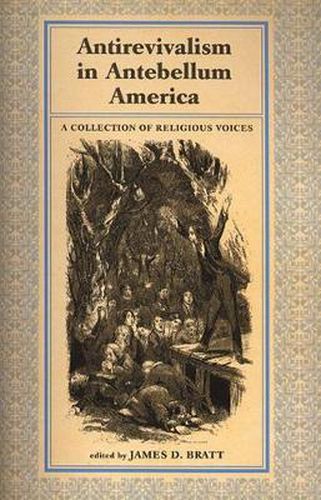Readings Newsletter
Become a Readings Member to make your shopping experience even easier.
Sign in or sign up for free!
You’re not far away from qualifying for FREE standard shipping within Australia
You’ve qualified for FREE standard shipping within Australia
The cart is loading…






One of the most enduring images from the early years of American history is that of a preacher on horseback, slogging through mud and rain to bring folks in the backwoods the message of God and glory. Such religious revivals not only became the defining mark of American religion but also played a central role in the nation’s developing identity, independence, and democratic principles. But revivalism has always generated opposition, too, even in its century of glory. In Antirevivalism in Antebellum America, James D. Bratt offers extensive introductions to primary antirevivalist documents. These works range from the Philadelphia Methodist John F. Watson’s protests against camp meetings in 1819, to Elizabeth Cady Stanton’s Eighty Years and More, written in 1898, in which she recalls her youthful encounter with revival preaching and her rebound into political activism and religious agnosticism. Through the recovered voices of antebellum religious critics, Bratt shows how American culture was already being reshaped a generation before the Civil War and how evangelical religion stood at the center of a culture war. If revivals typified the era when Americans launched and defined their new nation, then objections to these revivals embodied the growing discontent at what the nation had become. An important and long overdue collection, this book urges an understanding of antirevival literature both in the context of the era when it emerged as well as in terms of the broader dynamic of American life.
$9.00 standard shipping within Australia
FREE standard shipping within Australia for orders over $100.00
Express & International shipping calculated at checkout
One of the most enduring images from the early years of American history is that of a preacher on horseback, slogging through mud and rain to bring folks in the backwoods the message of God and glory. Such religious revivals not only became the defining mark of American religion but also played a central role in the nation’s developing identity, independence, and democratic principles. But revivalism has always generated opposition, too, even in its century of glory. In Antirevivalism in Antebellum America, James D. Bratt offers extensive introductions to primary antirevivalist documents. These works range from the Philadelphia Methodist John F. Watson’s protests against camp meetings in 1819, to Elizabeth Cady Stanton’s Eighty Years and More, written in 1898, in which she recalls her youthful encounter with revival preaching and her rebound into political activism and religious agnosticism. Through the recovered voices of antebellum religious critics, Bratt shows how American culture was already being reshaped a generation before the Civil War and how evangelical religion stood at the center of a culture war. If revivals typified the era when Americans launched and defined their new nation, then objections to these revivals embodied the growing discontent at what the nation had become. An important and long overdue collection, this book urges an understanding of antirevival literature both in the context of the era when it emerged as well as in terms of the broader dynamic of American life.